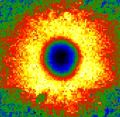Speakers
Description
In recent years, the study of synaptic plasticity has garnered significant attention for its crucial role in the functioning of the nervous system and its implications in learning and memory. This research explores the synaptic plasticity of heptazine-modified bismuth vanadate (BiVO4), with potential applications in neuromorphic computing and memory devices. The modification of BiVO4 with heptazine is hypothesized to enhance its synaptic response by introduction of trap states.
This study examines the presence of Spike Timing-Dependent Plasticity (STDP) in the BiVO4 semiconductor. STDP is a form of synaptic plasticity that plays a key role in learning, memory, and neural circuit development. The mechanism modifies synaptic strength according to the relative timing of action potentials between pre- and postsynaptic neurons. When the presynaptic spike precedes a postsynaptic spike by a short interval, potentiation occurs, on the other hand, when the postsynaptic spike precedes a presynaptic spike, the synapse is depressed.
The samples investigated in this study included BiVO4 with approximately 10% and 50% by weight of heptazine, as well as pure BiVO4 and pure heptazine. The BiVO4 samples were synthesized using sonochemical methods. During the experiment, a voltage of -300 mV was applied to the samples, which were then illuminated with 300 μs pulses of light at a wavelength of 460 nm.

The collected data confirms that the addition of heptazine enhances both the synaptic response of BiVO4 and increases the photocurrent values. This research reveals the potential of heptazine-modified BiVO4 as versatile and efficient material for advanced neuromorphic systems and memory technologies, offering new avenues for the development of computing architectures inspired by human brain .
1 Kacper Pilarczyk, Agnieszka Podborska, Maria Lis, Michał Kawa, Dominika Migdal, Konrad Szaciłowski- ,, Synaptic Behavior in an Optoelectronic Device Based on Semiconductor-Nanotube Hybrid”
https://doi.org/10.1002/aelm.201500471
[2] Kim, Min-Kyu & Park, Youngjun & Kim, Ik-Jyae & Lee, Jang-Sik – “Emerging Materials for Neuromorphic Devices and Systems”
https://doi.org/10.1016/j.isci.2020.101846
Acknowledgments:
NCN grant: Light intensity controlled photoelectrochemical switches for pattern recognition (program: OPUS, UMO-UMO-2022/47/B/ST4/01420)

